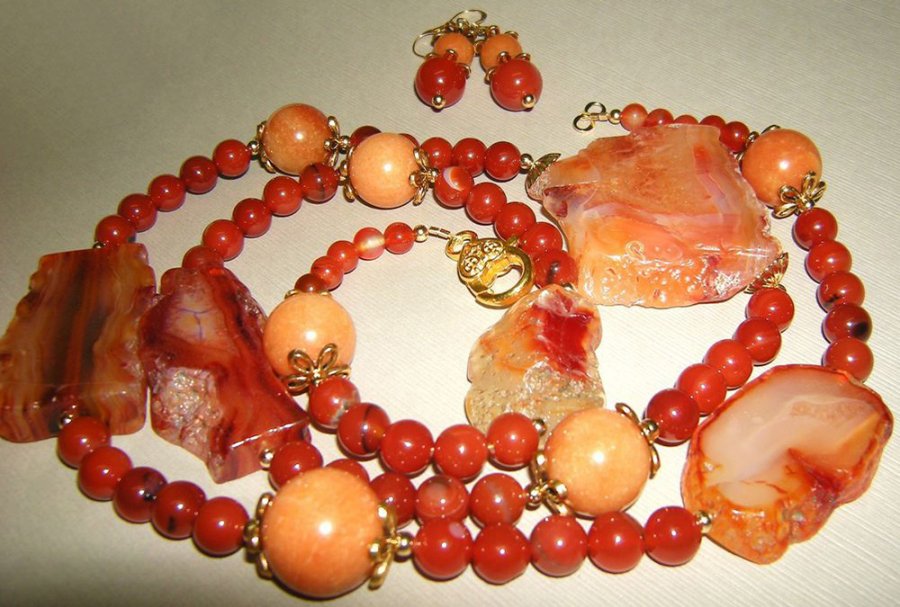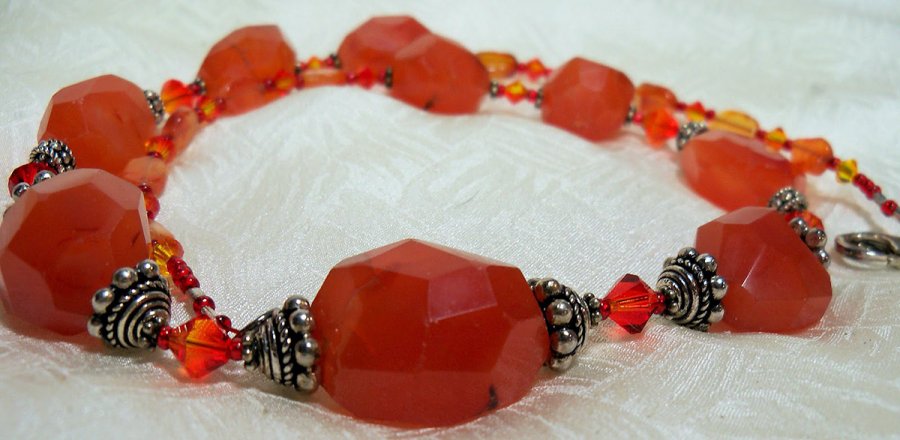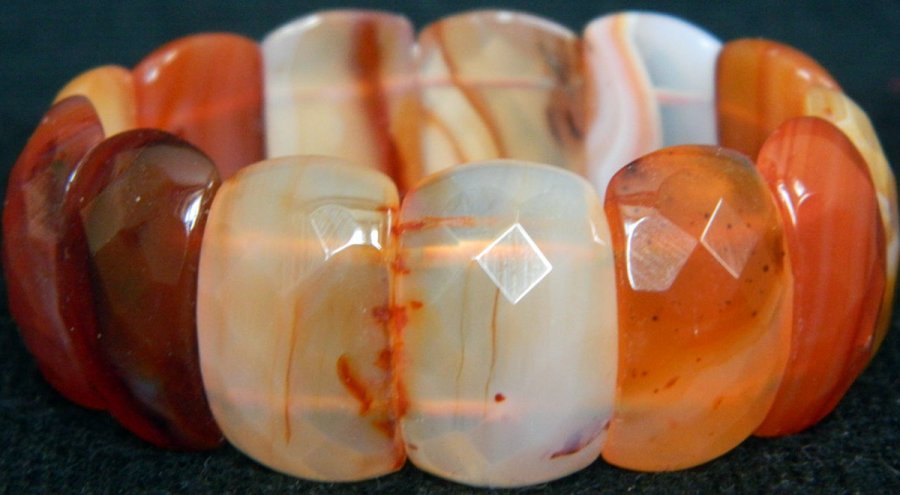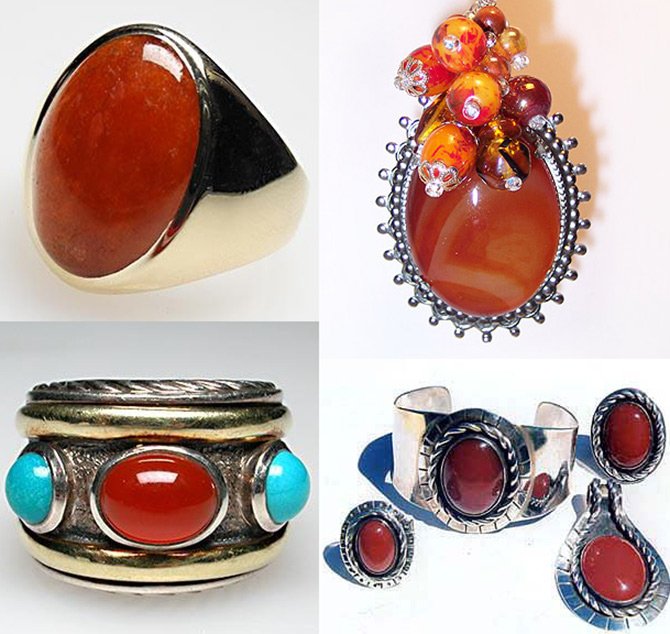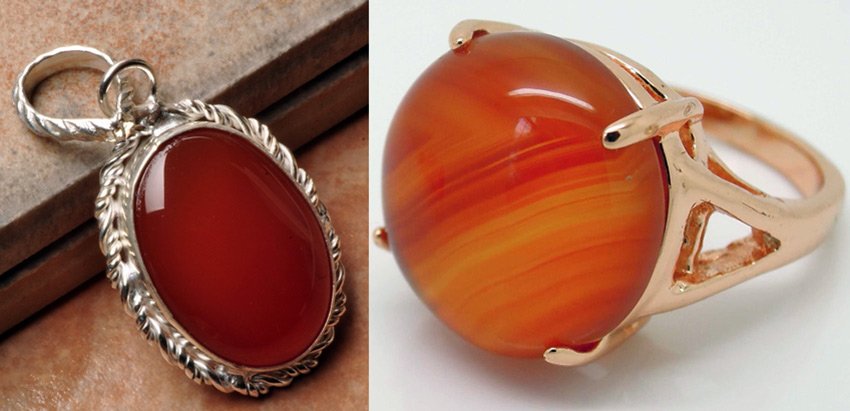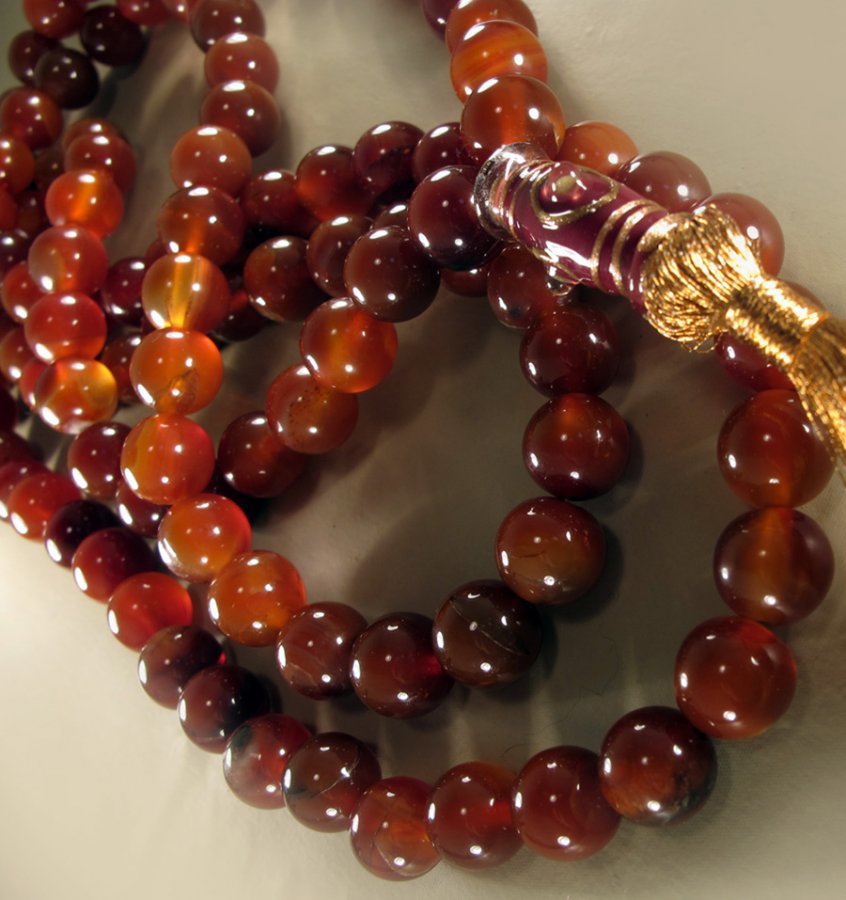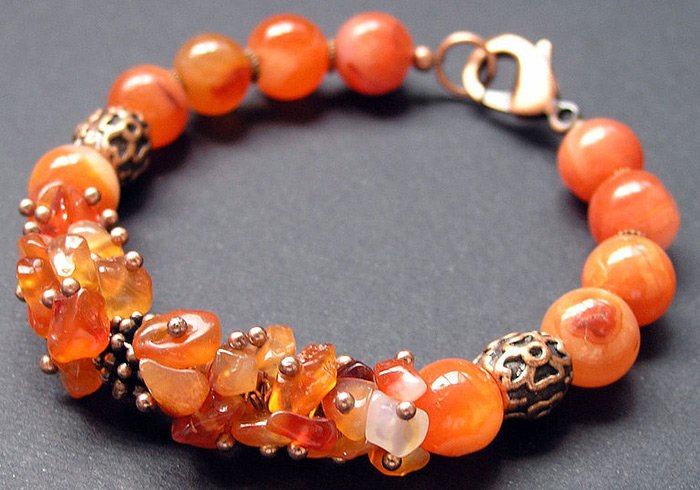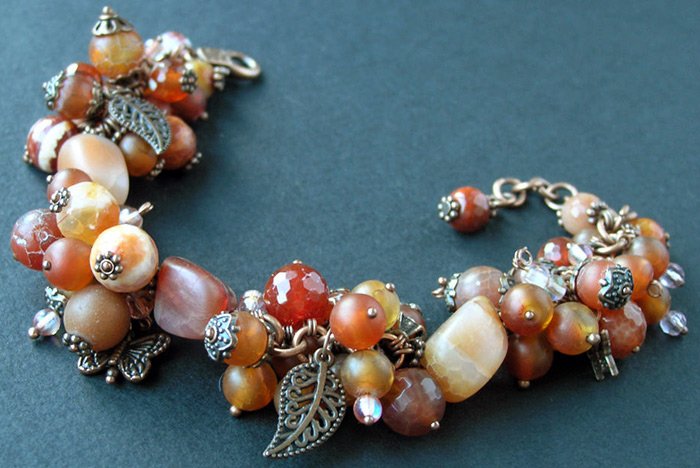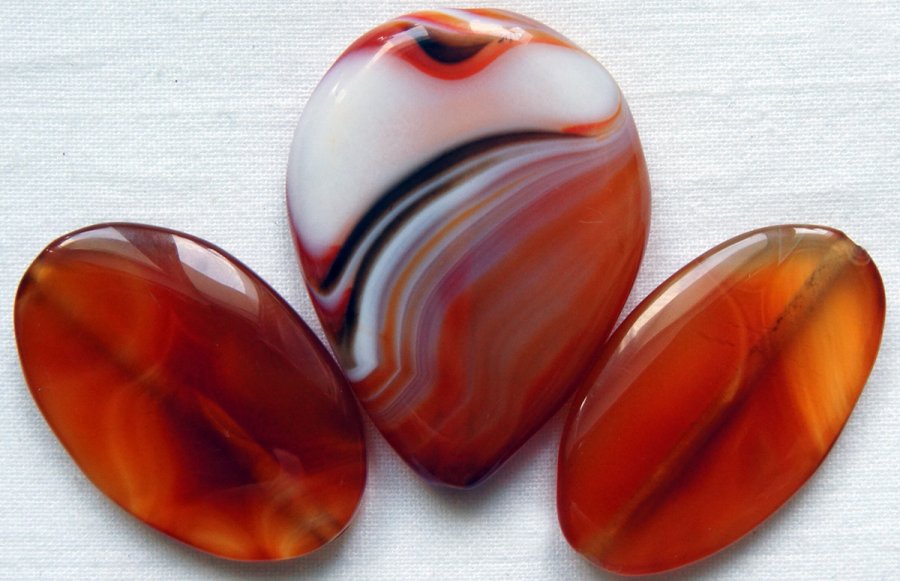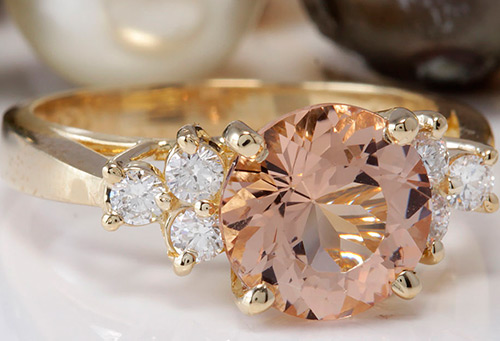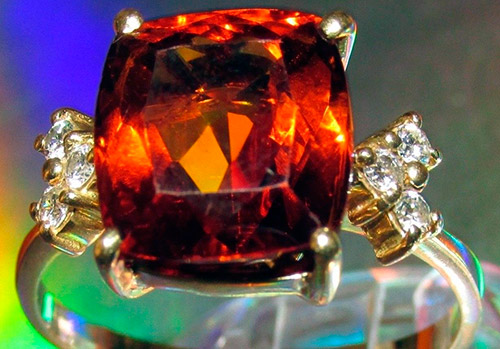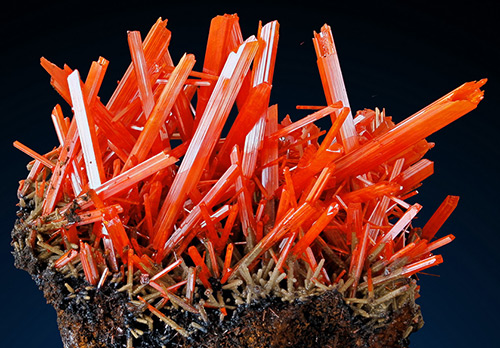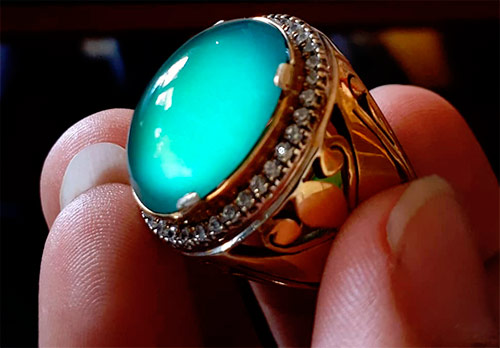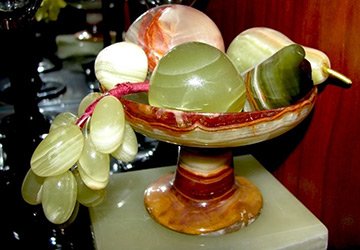Fashion Jewelry
Carnelian stone - properties and history
Carnelian is a stone that requires a gold setting. And not because he is really beautiful, but because it is gold that suits his color. Carnelian is an orange-red or just orange chalcedony, the structure of which consists of fine quartz crystals and has a fibrous structure. There are orange-yellow-pink, chestnut, brown-red, red, orange-yellow and yellow carnelians.
Chalcedony with a brown-red color is called differently. These are carnelians. But sometimes they are also called carnelians.
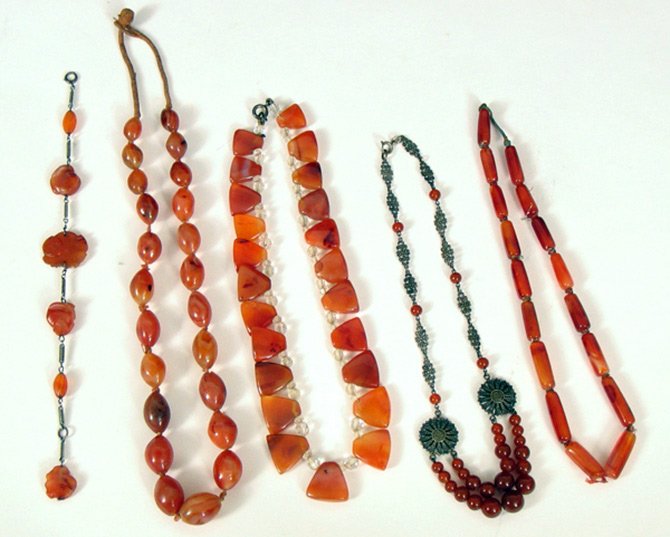
Stone history
In archaeological excavations, tools were found from carnelian, created 800 thousand years BC, later they began to make jewelry and amulets from it.
This stone was loved ancient Egyptians... Carnelian was used to make jewelry in the shape of a three-leaf clover, which was a symbol of the goddess Isis. The Egyptians appealed to the goddess for the grant of protection both in earthly life and after death.
The most popular carnelian became among the ancient Greeks, in Mesopotamia, in the Middle East, in Russia.
And in medieval Europe, this stone was also popular. Those who wore carnelian jewelry hoped to resist witchcraft with the help of a stone, to protect themselves from enemies and even lightning. It was believed that the stone can bestow courage, reconcile quarreling, cure nervous diseases, strengthen teeth, ward off headaches and even help during childbirth. In the "Book for the preparation of medicines for all parts of the human body", compiled in Ancient Egypt around 3500 BC, in the section devoted to stone treatment, carnelian is also mentioned. This beautiful stone was endowed with such miracles. In the 4th century A.D. carnelian was valued much higher than many precious stones and metals. It was valued above ruby, gold, silver, sapphire and topaz.
After many millennia, the names have come down to us - carnelian, sarder, carnelian. From the Greek word sardolith - a stone from Sardis, sarder - from the name of the capital of the Lydian kingdom Sardis, carnelian - from the Latin cornum - dogwood.
The stone is slightly translucent, but it is also found almost transparent. Carnelian is a stone that was formed as a result of volcanic processes. It acquires its color under the influence of sunlight. This is why it looks so warm - the Volcano and the Sun have tried to create it. It was not for nothing that the ancient Egyptians saw the color of the sunset in it.
Where are the best carnelian deposits? These are India, Madagascar island, Brazil, Uruguay, Mongolia, USA (Montana state). There are carnelian deposits in Russia. These are Yakutia, Buryatia, Chukotka, Chita region, Amur region (Zeya river).
Carnelian has become a traditional stone in jewelry. Amulets, rings, earrings, cameos, intaglio, brooches and other jewelry were made from it. Figurines, seals, cups, crosses - all these products that came to us from the past are extraordinarily beautiful, and some, given the art of the master, are simply masterpieces.
The fact that this stone was loved is confirmed by finds, both archaeological and written evidence. Many different carnelian products were found in the tomb of Pharaoh Tutankhamun. Many famous and great people had carnelian jewelry. For example, the ancient Egyptian finds with the image of a scarab beetle made of carnelian, pendants and a vessel for cosmetics of Queen Cleopatra, a belt buckle with carnelian not from anyone, but from Tamerlane himself, the seal of Kirill Razumovsky, the ring of the English poet Byron.
Carnelian was very popular among Muslims, especially rings with carnelian. The name of the owner or a saying from the Koran was engraved on the rings, and then this ring became an amulet or even a sacred relic.Muslims believed that with a carnelian ring, all desires come true. Tradition says that Muhammad wore such a ring. Apparently the beauty of the stone attracted his attention as well. Although is it only beauty? Muhammad believed that the one who wears the carnelian is in joy and prosperity. And, despite this saying, according to Biruni's testimony, Muhammad, after the capture of Mecca in the 7th century, ordered to break the statue of the idol of Hubal, carved from carnelian, which was the largest of all known carnelian products.
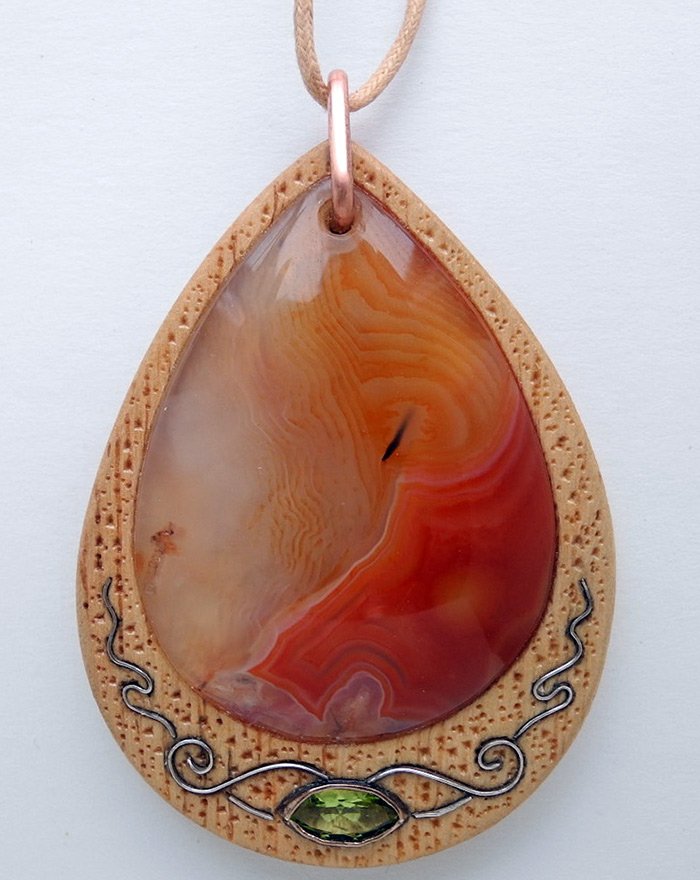
Carnelian is also mentioned in Ancient Russia in a book translated from ancient Greek and containing information about the properties of stones ("Izbornik Svyatoslav" 1073). Later, they liked to make panagias, mitres, crosses, frames for icons from it. Jewelers in Russia of the 20th century and modern Russia continue to love this wonderful stone that resembles a sunset.
For each of us born in any sign of the zodiac, carnelian bestows some kind of talents or protection, prosperity and a happy life. What can we say about the fact that carnelian is a talisman of creative people, businessmen and other artisans? Should we believe these talents of carnelian, which are attributed to him, but only one thing is known - the stone is unusually beautiful and loved since ancient times. Wear a ring with carnelian and put your soul into your work, and happiness itself will find you.
Comments and Reviews
Add a comment
Rating news
Shades of clothing that make women look younger
What shades of hair make women younger: rules and photos
Funny wedding dresses - photos and ideas
12 most expensive down jackets for the winter
How to look 25 at 40: tips from supermodels
Beautiful schoolgirls
Anti-aging haircuts and hairstyles for women
Fashionable skirts for autumn and winter
Fashionable women's trousers for the cold season
Fashionable and stylish sandals for summer 2024
Spring-summer 2024
 Fashionable dresses and tops with thin spaghetti straps
Fashionable dresses and tops with thin spaghetti straps
 Bandana tops: how to wear stylishly and beautifully
Bandana tops: how to wear stylishly and beautifully
 How to put together the perfect men's wardrobe for the summer
How to put together the perfect men's wardrobe for the summer
 Fashionable shorts for spring-summer 2024
Fashionable shorts for spring-summer 2024
 Fashionable skirts for spring-summer 2024: a guide to online shopping
Fashionable skirts for spring-summer 2024: a guide to online shopping
 The most fashionable dresses spring-summer 2024: styles and colors
The most fashionable dresses spring-summer 2024: styles and colors
 Fashionable total look 2024: ideas of images and trends
Fashionable total look 2024: ideas of images and trends
